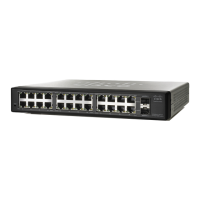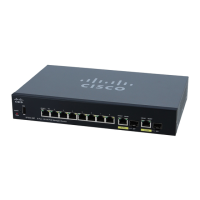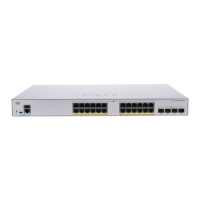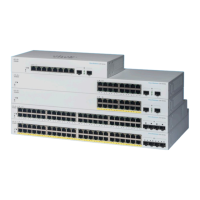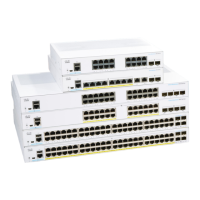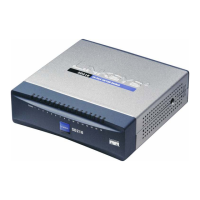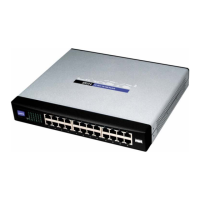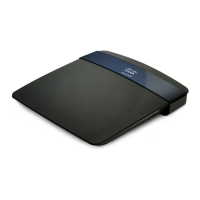Port Management
Link Aggregation
Cisco Small Business 200 Series Smart Switch Administration Guide 121
10
Every LAG has the following characteristics:
• All ports in a LAG must be of the same media type.
• To add a port to the LAG, it cannot belong to any VLAN except the default VLAN.
• Ports in a LAG must not be assigned to another LAG.
• No more than eight ports are assigned to a static LAG and no more than 16 ports can be candidates
for a dynamic LAG.
• All the ports in a LAG must have auto-negotiation disabled, although the LAG can have auto-
negotiation enabled.
• When a port is added to a LAG, the configuration of the LAG is applied to the port. When the port is
removed from the LAG, its original configuration is reapplied.
• Protocols, such as Spanning Tree, consider all the ports in the LAG to be one port.
Default Settings and Configuration
By default, ports are not members of a LAG and are not candidates to become part of a LAG.
Static and Dynamic LAG Workflow
After a LAG has been manually created, LACP cannot be added or removed until the LAG is edited and a
member is removed. Only then the LACP button become available for editing.
To c o n f i g u r e a static LAG, perform the following actions:
1. Disable LACP on the LAG to make it static. Assign up to eight member ports to the static LAG by
selecting and moving the ports from the Port List to the LAG Members list. Select the load balancing
algorithm for the LAG. Perform these actions in the LAG Management page.
2. Configure various aspects of the LAG, such as speed and flow control by using the LAG Settings page.
To c o n f i g u r e a dynamic LAG, perform the following actions:
1. Enable LACP on the LAG. Assign up to 16 candidates ports to the dynamic LAG by selecting and moving
the ports from the Port List to the LAG Members List by using the LAG Management page.
2. Configure various aspects of the LAG, such as speed and flow control by using the LAG Settings page.
3. Set the LACP priority and timeout of the ports in the LAG by using the LACP page.
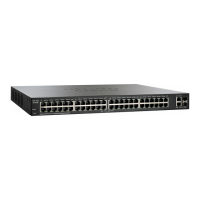
